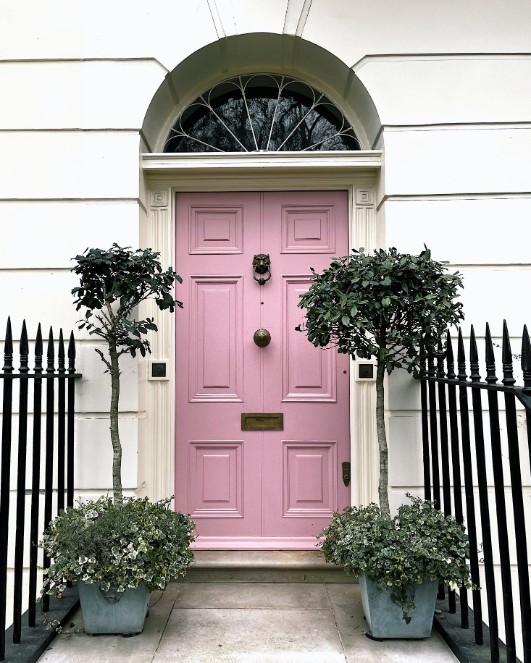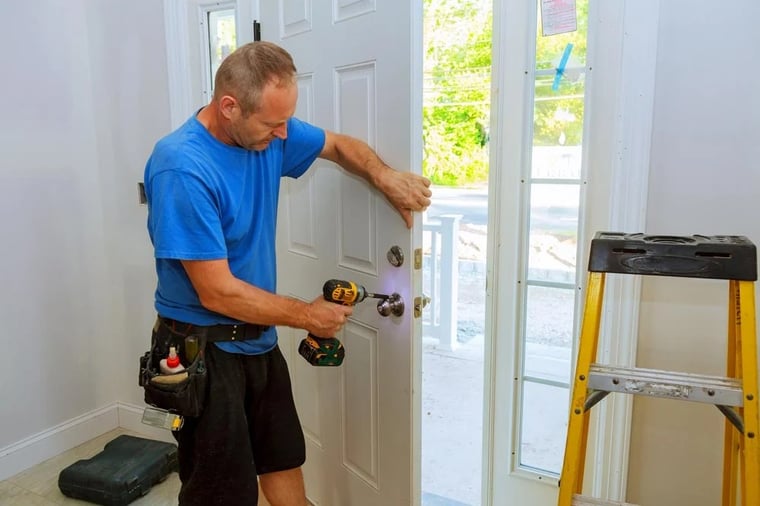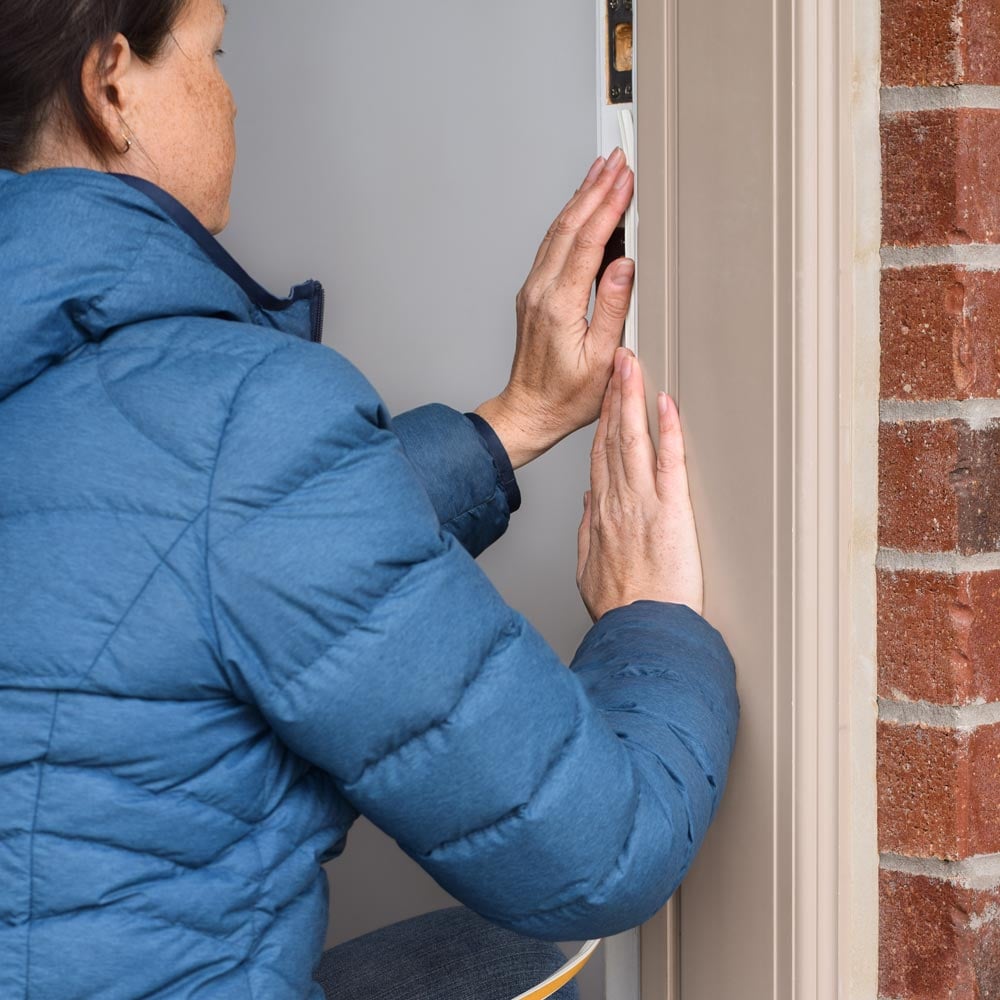What is the Most Efficient Exterior Door Material?
What Is The Most Efficient Type Of Exterior Door?
When it comes to selecting a door for your home or business one of the factors to consider is efficiency. Just imagine having a door that not only enhances the appearance of your property but also contributes to lower energy consumption and maintains a comfortable indoor environment.
In this article, we will explore the types of doors available their advantages and the important factors you should consider in order to choose the most efficient option. Join us as we dive into the world of doors specifically tailored for those who appreciate functional and sustainable design.
Definition of Efficient Exterior Door
An efficient exterior door refers to one that minimises energy loss and maximises insulation. When it comes to energy doors you'll find options, on the market including steel doors and fibreglass doors.
Steel doors are well known for their durability and strength providing security for your home. They also possess insulation properties making them quite energy efficient.
On the hand, fibreglass doors offer insulation capabilities along with resistance, against warping, cracking and rotting. They require maintenance. Can be customised to match any architectural style.
When selecting an energy door it's important to take into account its energy ratings. When searching for doors it's important to look for ones that have R values and low U factors. These indicators suggest insulation and less heat transfer.
Types of Exterior Doors
There are types of doors to consider when choosing the right one, for your home. Solid wood doors, fibreglass doors and steel doors are among the options
Each type has its features and advantages. For example, wooden doors have been a choice throughout history because of their beauty and versatility. They can be crafted from wood types like oak, mahogany, pine or cherry.

1. Wooden Doors
Advantages;
Aesthetic Appeal; The natural grain and texture of doors provide an inviting appearance.
Customisation; They can be customised through carving, painting or staining to match any design preference.
Insulation; Wood is an insulator that helps maintain warmth, in winter and coolness in summer.
Disadvantages;
Maintenance; Wooden doors require sealing or painting to protect against moisture, warping and pests.
Cost; quality wooden doors can be expensive.
Durability; Without care, environmental factors can cause deterioration over time.
2. Fibreglass Doors;
If you're looking for an alternative, to wooden doors, fibreglass doors are a great option. They offer durability without the need for maintenance.
Advantages;
lasting; Fibreglass doors are resistant to warping, rotting and rusting.
Energy Efficiency; Many fibreglass doors come filled with insulating foam, which helps in conserving energy.
Design Variety; You can find them in a range of finishes including ones that resemble wood grain.
Disadvantages;
Texture; Although fibreglass doors can mimic the appearance of wood they lack the warm touch.
Cost Consideration; It's worth noting that high-quality fibreglass doors can be somewhat pricey.
3. Steel Doors;
When it comes to prioritising safety steel doors are a choice due to their strength and security features.
Advantages;
Enhanced Security; Steel doors provide a level of protection against break-ins and intrusions.
Durability; They are resistant to warping and rotting over time.
Insulation Benefits; Many steel doors are filled with foam insulation for improved efficiency.
Disadvantages;
Susceptible to Dents; Steel doors may get dented, which could potentially lead to rust if not addressed promptly.
Cold Feel; It is worth mentioning that steel doors tend to feel colder and have a touch.
4. Aluminum Doors;
For homeowners seeking both durability and a modern look, aluminium doors fit the bill for homes.
Advantages;
Rust Resistant Properties; Unlike steel counterparts aluminium doors do not rust easily over time.
Customisation Options; You'll find finishes. Designs available, for aluminium door customisation. Lightweight doors are easier to handle and install due, to their weight. However, they do have some disadvantages. One drawback is that they tend to be more expensive compared to steel doors. Additionally, lightweight doors are not as strong as steel, which means they may offer security.
Moving on vinyl doors is a choice for those seeking a cost low maintenance option, particularly for patio doors. The advantages of vinyl doors include upkeep requirements and good insulation properties. Moreover, they are generally more affordable than wood or fibreglass options. However, there are drawbacks to consider. Vinyl doors have design limitations in terms of colour and style options. Furthermore, over time they can. Fade— in extreme climates.
Glass doors (such as sliding, French and patio doors) serve to enhance the connection between outdoor spaces while creating an illusion of larger integrated areas. The benefits of glass doors include light entering the home and unobstructed views of the outdoors. In particular, sliding glass doors save space since they don't require a swing room like ones do. On the downside security can be a concern with glass doors; although modern versions often feature reinforced glass for added safety measures. Privacy is another aspect to consider since, without curtains or blinds glass doors may not provide privacy.

Lastly, let's explore iron doors further...Iron doors serve both decorative purposes commonly found in high-end residences and luxurious estates. They offer advantages;
Security; These doors are incredibly strong and durable providing protection.
Design; Iron doors can be intricately crafted with designs and patterns.
Longevity; With care, they can last for several decades.
However, there are disadvantages to consider;
Weight; Iron doors are quite heavy requiring framing to support them.
Cost; Typically they are more expensive compared to types of doors.
In addition, to iron doors another option is doors. These doors combine materials to create a blend of desirable features. They come with their set of advantages;
Durability; Composite doors are resistant to warping, rotting and rusting.
Energy Efficiency; They provide insulation properties.
Design; Composite doors can imitate the appearance of wood or other materials.
Nevertheless, there are some downsides;
Cost; Composite doors may be pricier than door types.
Weight; They can be heavier when compared to doors.
Factors to Consider When Selecting an Efficient Exterior Door
When choosing a door that suits your needs and preferences regarding security, aesthetics, budget constraints and maintenance requirements; it's crucial to consider the pros and cons of each type. Factors such as insulation capabilities, durability, against weather conditions should also be taken into account during the selection process. When choosing a door it's important to prioritise high insulation properties. This will help minimise heat transfer and maximise energy efficiency. Here are some key factors you should consider;
Material;
Different materials offer levels of durability, maintenance requirements and insulation. For example, steel and fibreglass doors generally provide insulation, then doors but they may not have the same aesthetic appeal.

Energy Efficiency;
Look for doors with an energy rating. Doors that are Energy Star-rated have been tested for efficiency. Can help reduce heating and cooling costs. Consider doors with insulated cores, weatherstripping and double or triple-pane glass inserts.
Security;
The strength of the door material and the quality of locks and hardware are crucial for security purposes. Steel and solid wood doors usually offer security. Additionally, reinforced glass or security bars can enhance the safety of glass doors.
Durability and Maintenance;
Consider your climate conditions. How exposed the door will be to various elements. Some materials may require maintenance. Might not be as durable, in certain conditions. Fibreglass and steel doors generally require maintenance compared to wood which might need sealing or painting.
Style and Aesthetics;
Ensure that the chosen door complements the style of your home.
When choosing a door it's important to consider factors, like panel designs, glass inserts and colours. Keep in mind that your front door creates an impression for visitors to your home.
Budget is important. Remember that sometimes you get what you pay for. Investing in a higher-quality door can be beneficial in the run when it comes to durability, security and energy savings.
Proper installation is crucial for the performance of the door especially regarding energy efficiency and security. Ensure that the door fits perfectly without any gaps. If you don't have experience with installation tasks it may be worth considering hiring professionals.
Depending on where you live it's important to choose a weather door that can withstand rains strong winds or even hurricanes. Look for doors with weatherstripping and those specifically designed for your climate conditions.
If anyone in your household has issues think about choosing a door design that easily accessible without a threshold.
A good warranty can indicate the manufacturer's confidence, in their product. It also provides peace of mind knowing that you're covered if any defects or issues arise.
How can I make my front door more appealing? Looking to make your front door more energy efficient? Enhancing the energy efficiency of your door can help you reduce drafts, lower energy bills and maintain an indoor temperature. Here are some steps you can take;
- Weatherstripping; Seal any gaps, around the door frame by applying weatherstripping. You can choose from options like adhesive-backed foam tape, V strip or door sweeps based on your door type and gap size.

- Door Sweeps; Install a door sweep at the bottom of your door to prevent drafts from entering underneath it. Make sure it fits tightly against the threshold for efficiency.
- Threshold Seals; If there is a gap at the bottom of your door consider adding or replacing the threshold seal. Adjustable thresholds allow you to raise or lower them for a fit against the door.
- Upgrade Your Door; If your current door is old or made of material think about replacing it with a more energy-efficient model. Look for doors with an Energy Star rating as they are designed to be more efficient.
- Choose Doors or Insulated Cores; Opt, for doors that are solid or have insulated cores as they provide better insulation and help improve energy efficiency.
How Can I Make My Front Door More Energy-Efficient?
By following these steps you can enhance the energy efficiency of your door. Enjoy its benefits.
Fibreglass and steel doors, with insulated cores, provide insulation compared to wooden doors.
triple pane glass;
If your door has glass panels make sure they have two or three layers of glass with insulating gases like argon in between. This offers insulation compared to paneglass.
Consider using storm doors;
Installing a storm door can add an extra layer of insulation especially if your main door is not very efficient. Make sure the storm door has weatherstripping and is properly sealed.
Regular maintenance;
Check your door periodically for any signs of wear and tear. Replace any worn-out weatherstripping or seals.
Ensure that the door fits tightly in its frame. Over time doors may. Sag, leading to gaps.
Seal gaps with caulk;
Apply caulk to seal any gaps or cracks around the door frame. Where it meets the wall. This helps prevent drafts and heat loss.
Window film option;
If your door has glass panels think about applying insulating window film. It can help reduce heat transfer and make the door more energy efficient.
Consider curtains or drapes;
During months hanging a curtain or drape in front of the door can act as an additional barrier, against drafts.
Final Thought
When deciding on the door it's important to take into account factors, like insulation, durability and security. While each type of door has its benefits the best choice would be a door that is both well-insulated and able to withstand wear and tear while providing security. By considering these factors homeowners can select a door that not only improves energy efficiency but also fulfills their individual requirements and preferences.

